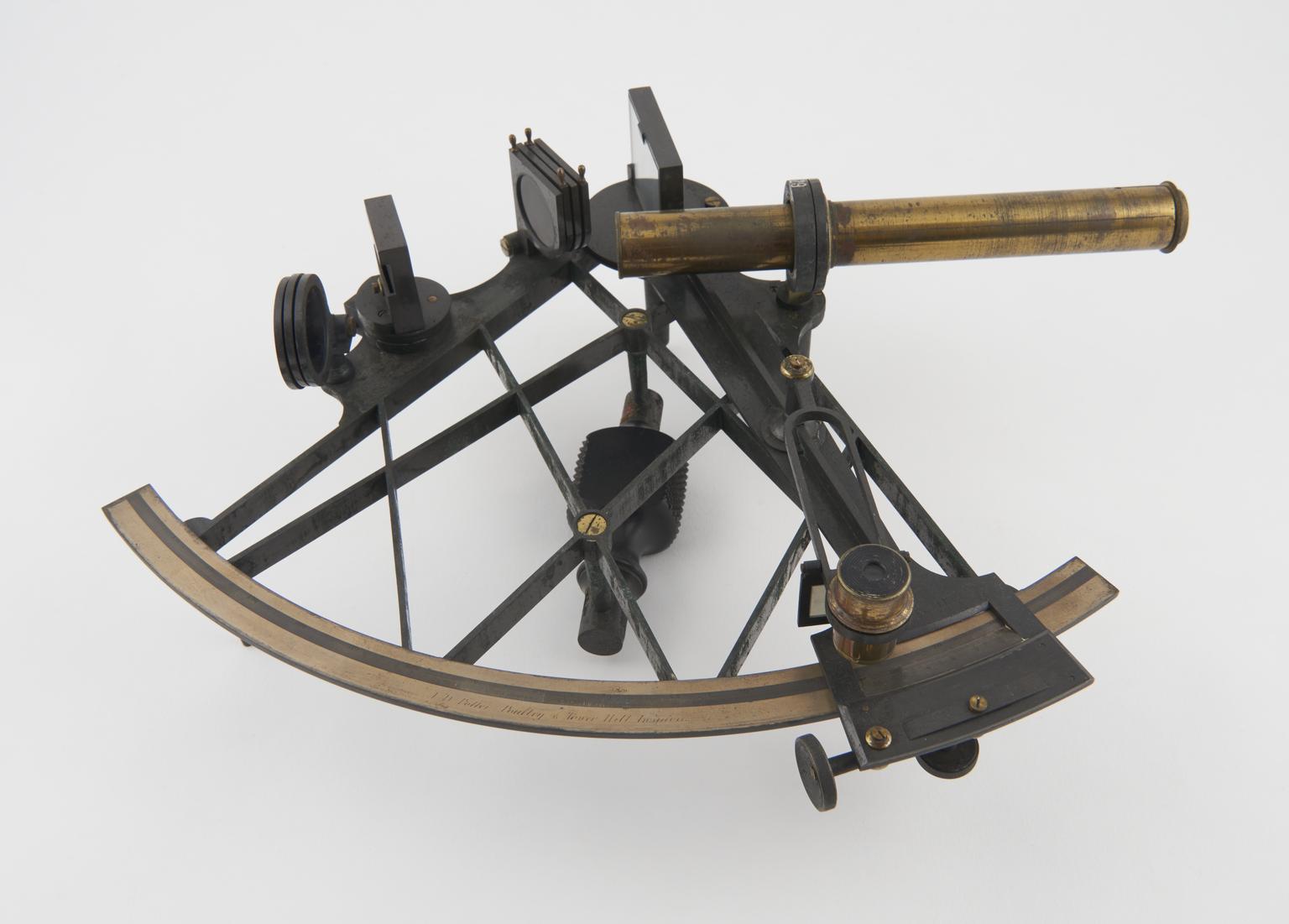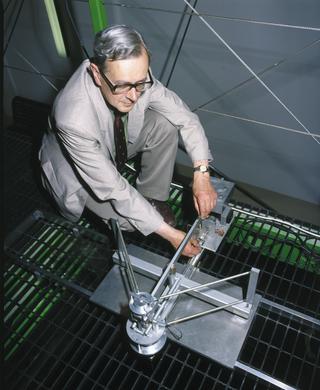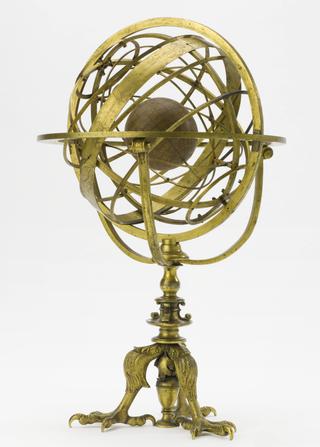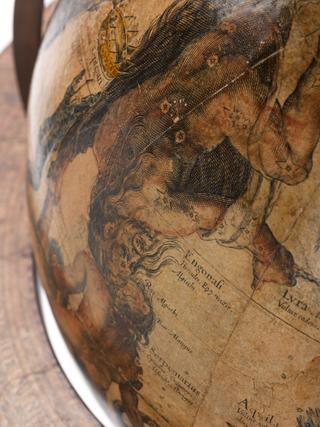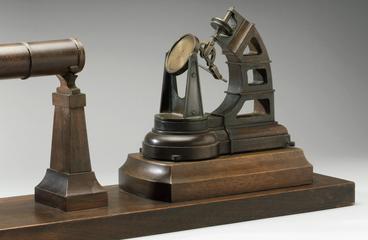Quintant made by John Dennett Potter, London, about 1885. Anodized brass diamond-pattern frame, wooden handle. Signed on the limb: J.D. Potter; Poultry & Tower Hill London. Marked at the bottom of the index arm: H O [broad arrow] 10. Inlaid silver scale from -5° to 163° every 10', measuring to 138°. Silver vernier to 10". The tangent screw and clamping screw are on the back of the index arm. Four shades (three grey, one green); three horizon shades (two grey, one green). Index-glass adjustment by screw; adjustment of the horizon glass by capstan screws and a square-headed screw and a detached key. Magnifier on a 90 mm swivelling arm, a frosted glass shade. Threaded telescope bracket in two parts, fitted for correcting collimation error; perpendicular adjustment by rising-piece and a milled knob. Telescope (82 mm) erect image; telescope (184 mm) inverted image, two parallel cross-wires; telescope (155 mm) star finder; extra draw tube (80 mm) inverted image, four cross-wires. Sight-tube (80 mm); three shaded eyepieces (all green); detached threaded telescope bracket for the star finder; adjusting key; adjusting pin. Mahogany keystone box, containing in the lid three certificates of examination of the National Physical Laboratory, for 1885, [illegible, stuck over] and for 1910. The lid also contains a trade label for Cary, Porter Ltd, and a Notice by them explaining how the star finder should be attached to the framed; it was an addition, made by Cary in April 1889. Formerly the property of the Hydrographic Office of the British Admiralty.
